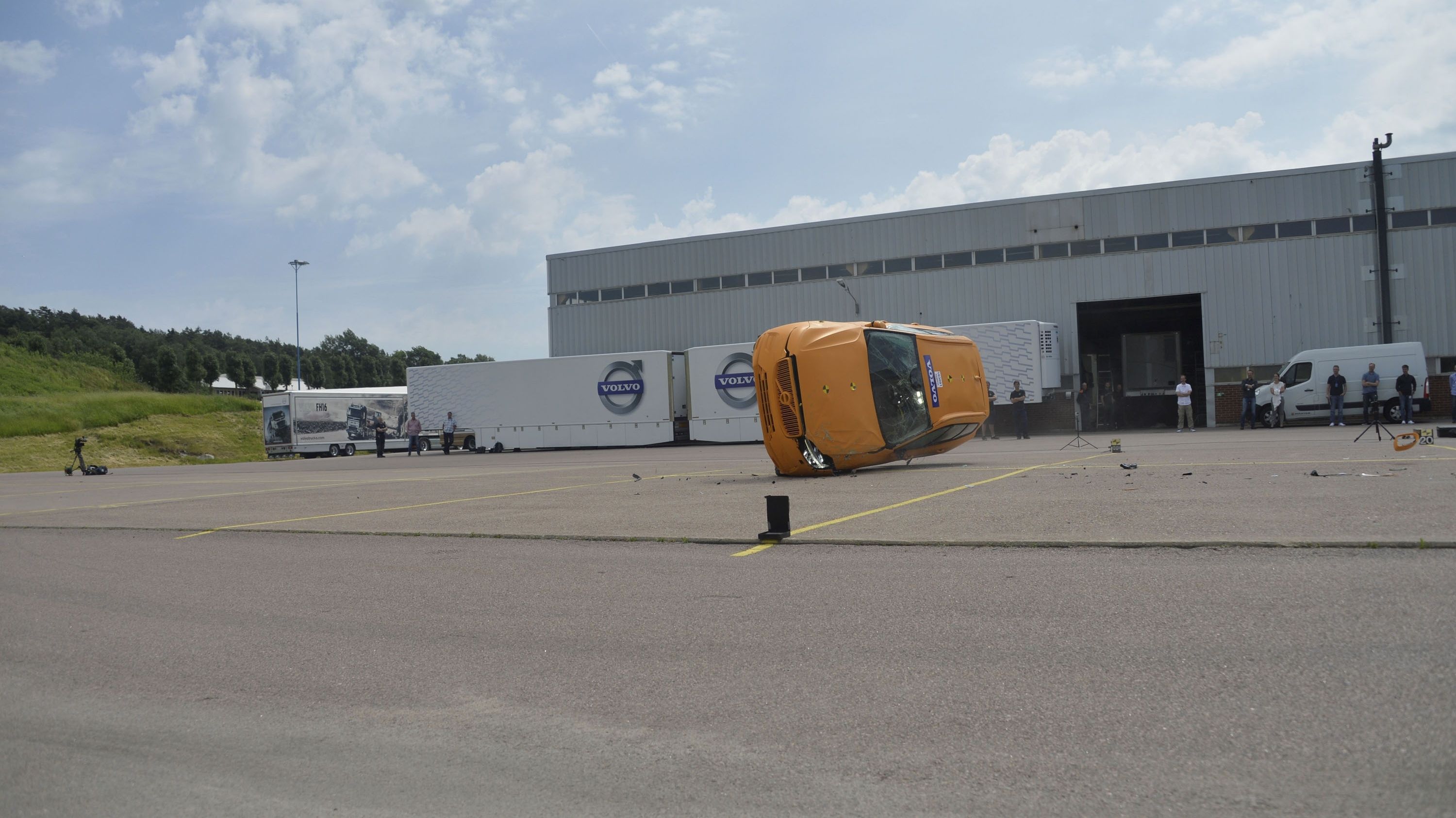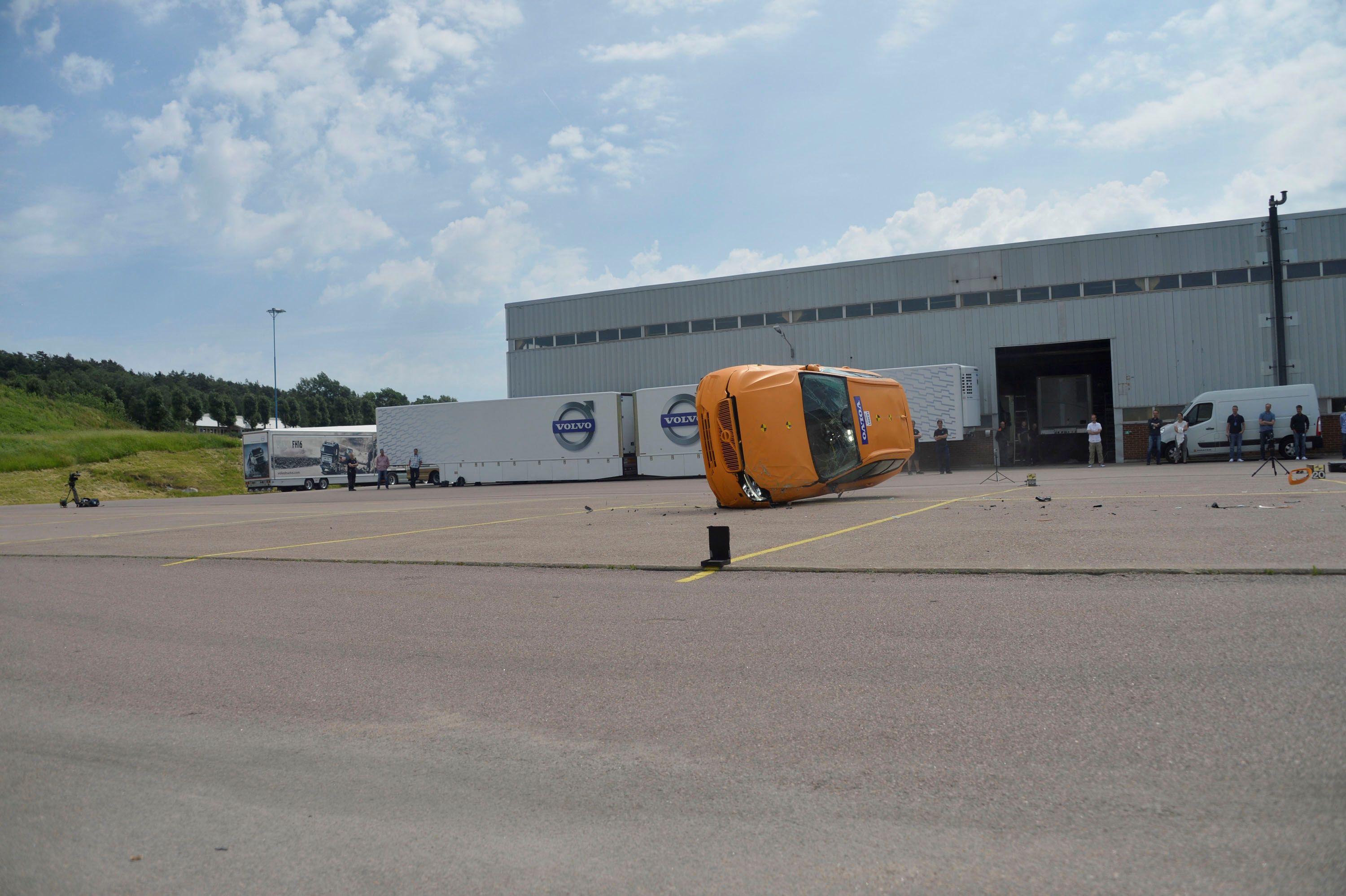Ah the crash test – it involves slamming a brand new car into an object to determine how well it holds up during an accident. There’s the small frontal overlap test, the moderate overlap test, the side impact test, and rollover test, among others. Well, the all-new 2018 Volvo XC60 just underwent the full barrage, getting slammed seven ways to Sunday. And it turns out (not surprisingly, really) that Volvo built an exceptionally safe crossover.
The videos below show the testing methods, as well as the mechanical carnage involved. The high-speed, slow motion film captures details not otherwise seen by the naked eye. The shots are almost beautiful in nature, though hauntingly eerie when considering those dummies represent real people like you and your family. That realization makes knowing the XC60’s good performance that much sweeter.
You won’t hear IIHS, NHTSA, or NCAP scores for these tests, however. These were actually done in-house by Volvo at its Stockholm-based Safety Center long before the XC60’s debut at the 2017 Geneva Motor Show.
For those who don’t know, Volvo is on a mission to have zero fatalities or serious injuries in its new vehicles by 2020. It’s a lofty goal, but one that’s far less self-serving than most long-term goals automakers make.
Anyway, for those wanting to see the XC60 in action, click past the jump for the videos.
Continue reading for more information.
Why It Matters
As with most crash testing these days, the vehicles undergo some serious preparation before being sent to its death. The fluids are drained, the exterior is painted a highly visible color, checkerboard measuring stickers are applied, high-speed cameras are mounted inside, and surprisingly high-tech test dummies are buckled in. The dummies are coated in special paint designed to transfer to any surface inside the car it touches. This gives engineers a clear picture of what body parts are hitting what panels.
The vehicle is then strapped to a catapult or mounted to a test rig, depending on the test. Final checks are made, measurements taken, and photographs shot.
Frontal Crash Test
This test involves slamming the XC60 into a solid barrier, straight on, at 35 mph. It’s designed to test the front crumple zone, passenger safety cell, and airbag deployment. The exact moment of impact is heralded by smoke cannons on the roof, helping engineers time airbag deployment and other sequences. The XC60 seems to take the hit well, with no broken glass, crumpled doors, or apparent frame damage behind the front wheels. Both front airbags deployed and received the dummies’ heads without sliding off. All told, it seems like a highly survivable crash.
Small Overlap Crash Test
This test involves the XC60 hitting a barrier at 40 mph with only 25 percent of its front end. This means the barrier is hitting bodywork outside of the front subframe. If not designed well, the vehicle will allow the barrier to penetrate the passenger compartment at the A-pillar, creating all sorts of issues for the driver. It’s clear by this test the 2018 XC60 doesn’t have that issue. It’s also extremely interesting to watch a small-overlap test from underneath. This is a first for me, as neither the IISH nor NHTSA uses under-floor cameras to capture crash test footage.
Roll Over Crash Test
The roll-over test is designed to test the roof structure, seatbelts, and airbags. The XC60 is placed on a tilted platform, which is sent hurtling down the catapult at 30 mph. Once outside the testing building, the platform hits a barrier and immediately stops, sending the XC60 tumbling sideways down a concrete pad. The video shows the XC60’s side curtain airbags deploy while reserving the front airbags and driver’s knee airbag. At the conclusion, the roof structure appears completely intact with no mangled roof pillars or swinging doors. In fact, the roof and door structures stayed so rigid, all the glass remained with the vehicle though shattered. That’s impressive.
Read our full review on the 2018 Volvo XC60 here.





